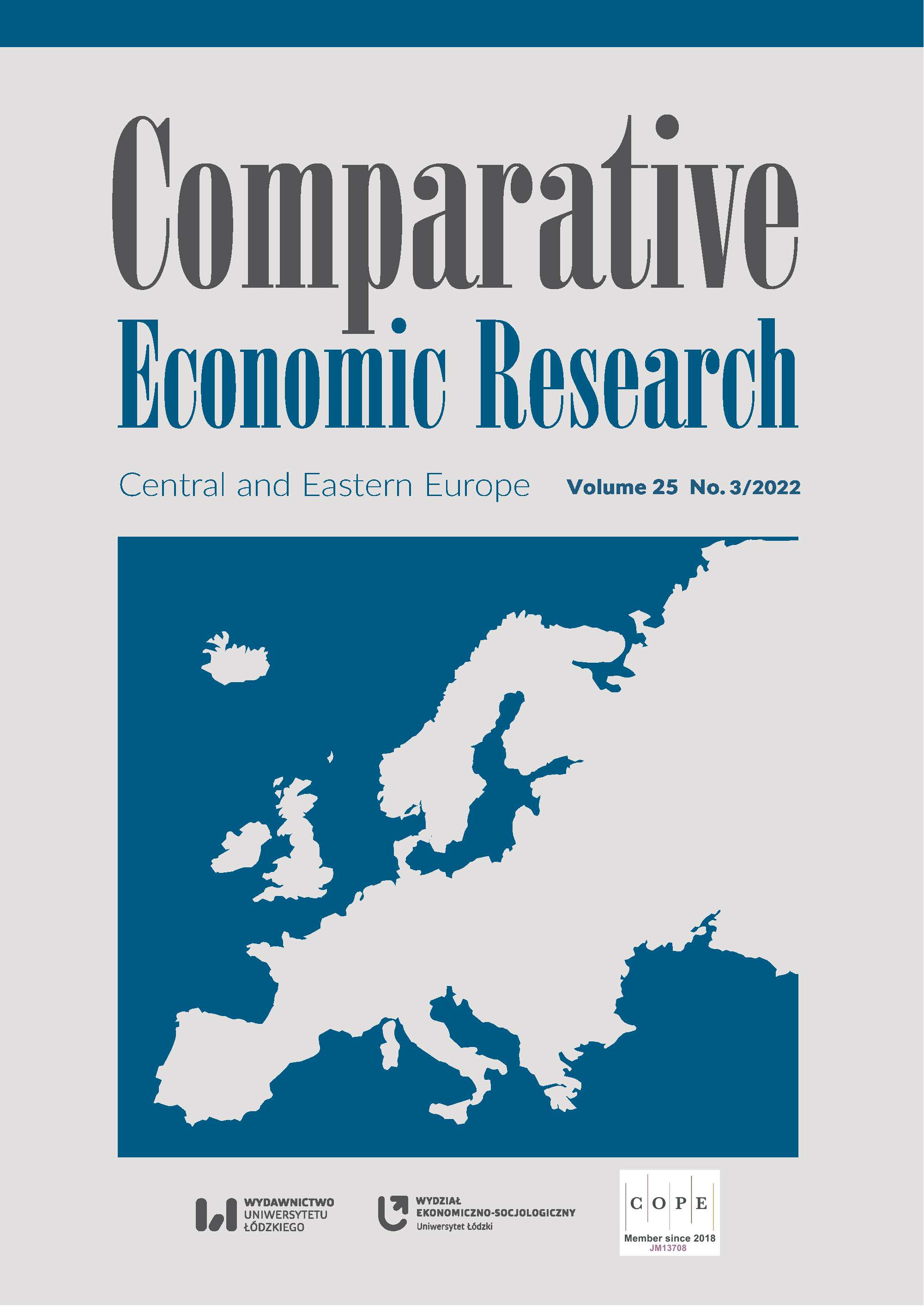Demographic Changes in the Countries of the Western Balkans – A Comparative Analysis with the European Union
DOI:
https://doi.org/10.18778/1508-2008.25.26Keywords:
demographic ageing, Western Balkans, demographic changes, ageing index, population aged 65 and over, cluster analysisAbstract
The study analyses the demographic changes in five countries of the Western Balkans – Albania, Bosnia and Herzegovina, Montenegro, North Macedonia, and Serbia – which are associated with and are potential candidates for European Union (EU) member states. Due to a lack of data, Kosovo was excluded. The research was based on selected measures, both static and dynamic. The analysis was conducted against the background of the indicators presented for the EU, with the longest time sample covering the years 1960–2020. The study presents the scope of demographic changes and the advancement of the population ageing of these countries using selected static measures and showing their dynamics. The methods used are based on data analysis and cluster analysis. The results point to the advancement of demographic changes and ageing in the region. The comparison of calculated measures indicates that the demographic structure in the region has shifted towards “old”, with the share of people aged 65 and over higher than 14% in 2020. The most advanced stages concern Bosnia and Herzegovina, where the transformation from a “young” demographic structure to an “old” was very dynamic and deep.
Downloads
References
Abramowska‑Kmon, A. (2011), O nowych miarach zaawansowania procesu starzenia się ludności, “Studia Demograficzne”, 1 (159), pp. 3–22.
Google Scholar
Bailey, K.D. (1994), Typologies and taxonomies: An introduction to classification techniques, “Sage University Paper Series on Quantitative Applications in the Social Sciences”, Vol. 07–102, Sage, Thousand Oaks.
Google Scholar
Bernstein, I., Garbin, C., Teng, G. (1988), Applied Multivariate Analysis, Springer, New York, https://doi.org/10.1007/978-1-4613-8740-4
Google Scholar
DOI: https://doi.org/10.1007/978-1-4613-8740-4
Everitt, B.S., Landau, S., Morven, L., Stahl, D. (2011), Cluster Analysis, John Wiley & Sons, Ltd., Hoboken, https://doi.org/10.1002/9780470977811
Google Scholar
DOI: https://doi.org/10.1002/9780470977811
GUS (2014), Sytuacja demograficzna osób starszych i konsekwencje starzenia się ludności Polski w świetle prognozy na lata 2014–2050, Departament Badań Demograficznych i Rynku Pracy, Warszawa.
Google Scholar
Holzer, J.Z. (2003), Demografia, Polskie Wydawnictwo Ekonomiczne, Warszawa.
Google Scholar
Iparraguirre, J.L. (2019), Economics and ageing: Volume III : Long‑term care and finance, Springer Nature, Switzerland, Palgrave Macmillan, Cham, https://doi.org/10.1007/978-3-030-29019-1
Google Scholar
DOI: https://doi.org/10.1007/978-3-030-29019-1
Kaufman, L., Rousseeuw, P.J. (2005), Finding groups in data: An introduction to cluster analysis, John Wiley & Sons, Inc., Hoboken.
Google Scholar
Petrovic, M., Wilson, G. (2021), Bilateral relations in the Western Balkans as a challenge for EU accession, “Journal of Contemporary European Studies”, 29 (2), pp. 201–218, https://doi.org/10.1080/14782804.2020.1865884
Google Scholar
DOI: https://doi.org/10.1080/14782804.2020.1865884
Razin, A., Schwemmer, A. (2022), Ageing and Welfare State Policy: A Macroeconomic Perspective, “Journal of Government and Economics”, 5, 100030, https://doi.org/10.1016/j.jge.2022.100030
Google Scholar
DOI: https://doi.org/10.1016/j.jge.2022.100030
Romesburg, C. (2004), Cluster analysis for researchers, Lulu Press, Research Triangle, North Carolina.
Google Scholar
Rosset, E. (1959), Proces starzenia się ludności. Studium demograficzne, Polskie Wydawnictwa Gospodarcze, Warszawa.
Google Scholar
Sarstedt, M., Mooi, E. (2014), A concise guide to market research: The process, data, and methods using IBM SPSS Statistics, Springer, Berlin–Heidelberg.
Google Scholar
DOI: https://doi.org/10.1007/978-3-642-53965-7
Spijker, J. (2015), Alternative indicators of population ageing: An inventory, “Vienna Institute of Demography Working Paper”, No. 4.
Google Scholar
Stanisz, A. (2007), Przystępny kurs statystyki z zastosowaniem STATISTICA PL na przykładach z medycyny. Tom 3 – Analizy wielowymiarowe, StatSoft, Kraków.
Google Scholar
United Nations data (n.d.), International Migrant Stock data, https://www.un.org/en/development/desa/population/migration/data/estimates2/estimates19.asp (accessed: 22.11.2021).
Google Scholar
UN SD (2017), Handbook on measuring international migration through population censuses, Department of Economic and Social Affairs, Background document, Statistical Commission, Forty‑eighth session 7–10 March, Item 4(a) of the provisional agenda, Demographic Statistics, United Nations, New York.
Google Scholar
Vlandas, T., McArthur, D., Ganslmeier, M. (2021), Ageing and the economy: A literature review of political and policy mechanisms, “Political Research Exchange”, 3 (1), 1932532, https://doi.org/10.1080/2474736X.2021.1932532
Google Scholar
DOI: https://doi.org/10.1080/2474736X.2021.1932532
Ward, J.H. (1963), Hierarchical grouping to optimize an objective function, “Journal of the American Statistical Association”, 58 (301), pp. 236–244, https://doi.org/10.1080/01621459.1963.10500845
Google Scholar
DOI: https://doi.org/10.1080/01621459.1963.10500845
World Bank (n.d.), World Development Indicators database, https://databank.worldbank.org/source/world‑development‑indicators (accessed: 22.11.2021).
Google Scholar
Zeliaś, A. (ed.) (2004), Poziom życia w Polsce i krajach Unii Europejskiej, Polskie Wydawnictwo Ekonomiczne, Warszawa.
Google Scholar
Downloads
Published
How to Cite
Issue
Section
License

This work is licensed under a Creative Commons Attribution-NonCommercial-NoDerivatives 4.0 International License.











